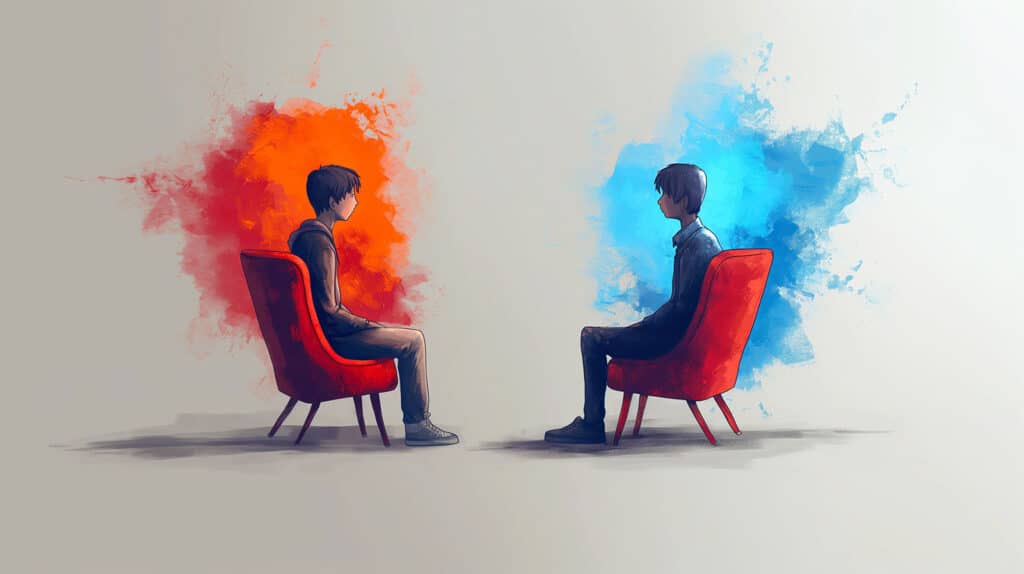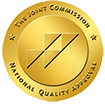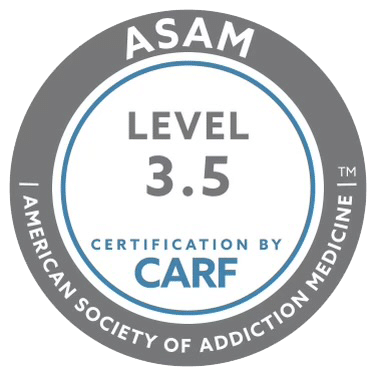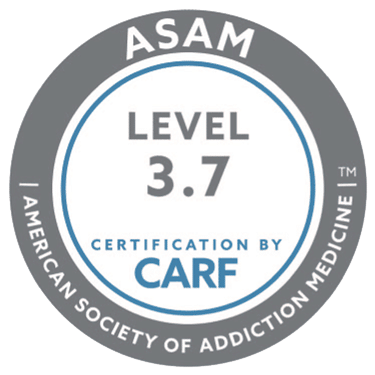Many people with mental health issues often get stuck in negative thought patterns called cognitive distortions.
One is thinking that the worst is bound to happen (catastrophizing). Another is believing something will go wrong because it once did (overgeneralizing). And these are just a few examples.
If you’re getting these kinds of thoughts and finding yourself reacting unhealthily, CBT (cognitive behavioral therapy) can help.
In this guide, we discuss in detail what CBT is so you can decide if it’s the treatment option you need.

What Is Cognitive Behavioral Therapy?
Cognitive-behavioral therapy (CBT) is a type of treatment based on the idea that mental health issues are often sustained by certain thought patterns.
CBT pioneers Aaron Beck and Albert Ellis introduced the concept that negative, unhelpful thoughts, or cognitive distortions, fuel emotional distress and behavioral problems. These thoughts are often tied to deeper beliefs about ourselves and the world.
CBT aims to reduce symptoms, improve quality of life, and ideally, help you overcome your disorder or current problem. While CBT focuses a lot on thoughts, it also considers your emotions, physical sensations, and behaviors as important parts of the overall picture.
How Does CBT Work?
The therapy is collaborative—you’ll work with the therapist to challenge and change unhelpful thoughts and behaviors. In short, you’re an active participant in the problem-solving process.
Your first session will likely include psychoeducation, assessment, engagement, and goal-setting. Your cognitive-behavioral therapist will guide you in recognizing negative or inaccurate thinking patterns that may be causing or worsening your emotional difficulties.
You’ll then examine your thoughts. Are they based on facts, or are they just assumptions? This process helps you see situations more clearly and respond to them more effectively.
The next step is replacing these thoughts with more balanced, constructive ones. This doesn’t mean forcing yourself to think positively all the time, but instead to think more realistically.
Another key part of CBT is behavioral activation. Your therapist might encourage you to try new ways of responding in certain situations. Using CBT techniques, you’ll develop coping skills and get homework to do between sessions to reinforce new thinking and behavioral patterns.
Towards the end of your therapy, you’ll formulate strategies to maintain your progress and prevent relapse. This might include identifying early warning signs of old patterns returning and having a plan to address them.
CBT typically involves weekly or bi-weekly therapy sessions over a few months, although it may be shorter or longer depending on your condition or other factors.
What Can CBT Help With?
CBT can help with various issues because our thought patterns are relevant across many different problems.
That said, the most common application of CBT is managing symptoms in mental health conditions, including:
- Depression and mood disorders
- Anxiety disorders (e.g., social anxiety, panic disorder, phobias)
- Obsessive-compulsive disorder (OCD)
- Post-traumatic stress disorder (PTSD)
- Eating disorders (e.g., bulimia, binge eating disorder)
- Substance use disorders (SUD)
- Bipolar disorder
- Schizophrenia
Therapists may also use CBT to help patients manage:
- General stress
- Anger
- Insomnia
- Perfectionism
- Loss and grief
- Body image concerns
- Chronic pain
- Distress due to medical conditions or disability
- Low self-esteem
- Criminal behaviors
Is CBT Effective?
Cognitive behavioral therapy is one of the most researched forms of talk therapy. Countless studies have shown that CBT is the best therapeutic approach available today, which is why mental health professionals widely use it.
For instance, a review of CBT’s effectiveness found that CBT is an effective treatment for a range of psychological problems, particularly anxiety disorder, anger control issues, eating disorders, and general stress.
The benefits of CBT appear to be long-lasting too. A 2018 study revealed that over half of young participants with various anxiety disorders no longer met the criteria for these conditions two or more years after completing CBT treatment.
Depression is another area where CBT has shown remarkable results. Besides helping alleviate depressive symptoms, it prevents relapse after treatment, according to a 2022 study.
Additionally, research from 2020 suggests that when combined with medications, CBT is beneficial in treating alcohol addiction and substance use disorder.
Forms of CBT
CBT’s core principle is that changing negative thought patterns can also change how we feel and act. Over time, CBT has evolved to include specific approaches for different mental health problems, but they all follow this basic idea.
Here’s a look at the different types of therapy under CBT:
- Acceptance and Commitment Therapy (ACT): ACT teaches you to accept that negative emotions are a part of life. So, rather than trying to eliminate these experiences, ACT helps you commit to actions that align with your values.
- Mindfulness-Based Cognitive Behavioral Therapy (MBCT): MBCT blends CBT techniques with mindfulness practices. By becoming more aware of your thoughts in the present moment, you can catch negative spirals early and prevent them from deepening.
- Rational Emotive Behavior Therapy (REBT): REBT helps identify maladaptive thoughts or irrational beliefs that lead to negative emotions and behaviors. It digs into the reasons for these thoughts, promotes self-acceptance, and differentiates between harmful and helpful emotions.
- Dialectical Behavioral Therapy (DBT): DBT teaches four important skills: mindfulness (being in the moment), distress tolerance (coping with difficult situations), emotion regulation (managing intense feelings), and interpersonal effectiveness (communicating assertively and maintaining relationships).
Common CBT Techniques
Below are some CBT techniques you might encounter during therapy:
- Activity Scheduling: This exercise is about planning your day or week around activities that are good for your mental health. This breaks the cycle of inactivity that often comes with depression and provides structure to your day to reduce anxiety.
- Exposure Therapy: This technique is often used for phobias and anxiety disorders. It involves gradually facing your triggers in a safe, controlled setting. For instance, you might start by looking at pictures, then work up to confronting your fears in person.
- Guided Discovery: Your therapist asks questions to help you explore your thoughts and beliefs, especially those that might be inaccurate or unhelpful. This way, you’ll see situations from different perspectives and come to more balanced conclusions.
- Role-Playing: You might practice a conversation with your therapist playing the other person. This prepares you for real-world situations and builds your confidence in your abilities.
- Self-Instructional Training: This method involves giving yourself spoken instructions or reminders during stressful situations. You can also practice saying positive things about yourself (self-statement) now and then.
- Self-Talk: You’ll pay attention to your internal dialogues and change inappropriate thought patterns. Developing healthy self-talk eventually eases feelings of sorrow, shame, guilt, nervousness, helplessness, and self-blame.
- Stimulus Control: This intervention helps control destructive habits and addictions. The idea is to identify and then avoid or change the environmental triggers that cause disruptive behaviors.
- Stress Management and Relaxation Exercises: These are practical tools to help calm your body and mind. They might include deep breathing exercises, imagining peaceful scenes, or progressive muscle relaxation (tensing and relaxing different muscle groups).
- Thought Journaling: Think of this as keeping a diary. You write down negative thoughts as they occur, the situation that triggers them, and how you feel about it. Journaling helps you identify patterns in your thinking, so you can challenge and restructure them.
Final Thoughts
CBT (cognitive behavioral therapy) is a popular form of psychotherapy for many reasons. It’s short-term, evidence-based, present-focused, and goal-oriented.
However, keep in mind that results take time and work. Keep practicing CBT techniques and be consistent.
Check with a CBT therapist if it’s the right treatment option for your particular condition.
References:
- https://www.health.harvard.edu/blog/how-to-recognize-and-tame-your-cognitive-distortions-202205042738
- https://www.medicalnewstoday.com/articles/behavioral-activation
- https://www.ncbi.nlm.nih.gov/pmc/articles/PMC3584580/
- https://www.sciencedirect.com/science/article/pii/S0887618517304280
- https://pubmed.ncbi.nlm.nih.gov/36162683/
- https://jamanetwork.com/journals/jamanetworkopen/fullarticle/2767358
- https://www.ncbi.nlm.nih.gov/pmc/articles/PMC2834575/







